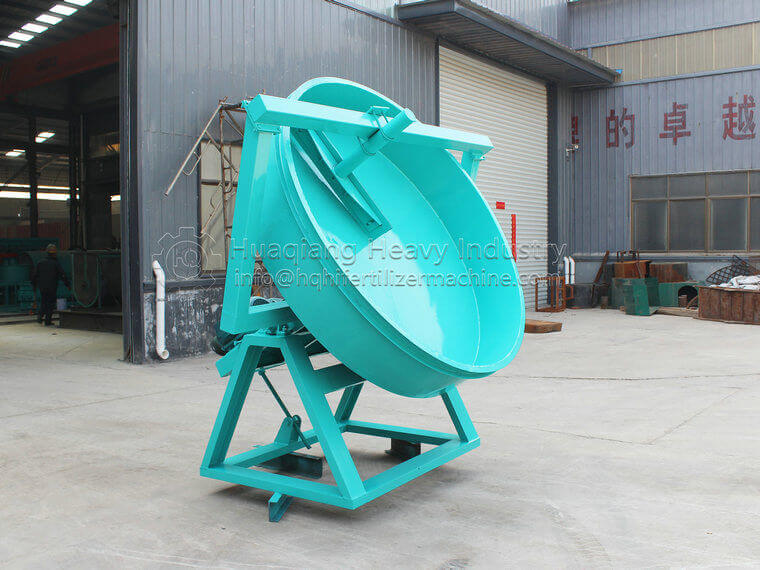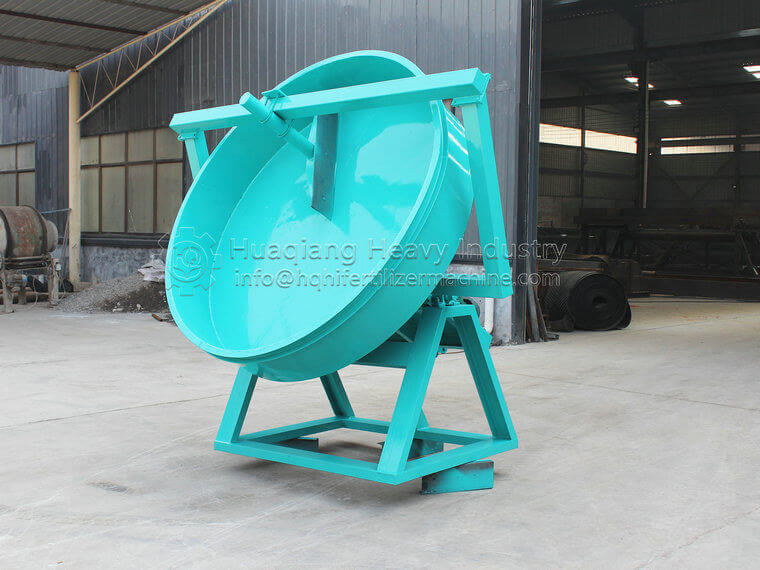The range of granulating raw materials and equipment process of the disc granulator
The disc granulator is suitable for granulating organic fertilizer, compound fertilizer, compound fertilizer, and organic-inorganic compound fertilizer: the disc granulator is face-to-face, easy to control, and adjustable flexibly. Install a water spraying device above the disc to spray it out in a mist shape. The material continuously flows into the rotating disc through a belt conveyor or other conveying equipment, is carried up as the disc rotates, and then falls down to the bottom along the bottom of the disc. At the same time, due to the addition of mist like water, the material gradually forms particles during the process of rotating and falling with the disc. As time goes on, the particles gradually increase. The disc granulator is designed with an angle adjustment mechanism, and users can determine the inclination angle of the disc according to the required particle size. Generally, the inclination angle of the disc can be adjusted between 35 ° -50 °, and particles that meet the specifications float above the inclined disc. As the disc rotates, the particles are thrown out along the tangent direction of the disc and flow into the belt conveyor for feeding. Pull the next step inside the mouth.
The disc granulator is powered by an electric motor, which drives the inclined disc to rotate. The internal scraper prevents the material from sticking to the bottom of the disc. When the material rotates above, it rolls down on its own, like a snowball rolling into particles. Suitable for non sticky powder materials.
The general organic fertilizer disc granulator is divided into two parts, with the fermentation part divided into three types of equipment: pre mixing equipment, tipping truck, and refining equipment; The organic fertilizer granulator equipment is divided into two mixers – crusher – granulator – dryer – cooler – screening machine – coating machine – automatic packaging machine, and the equipment is connected through a conveyor or elevator. Auxiliary equipment, baffle dust removal, cyclone dust removal, ink dust removal, induced draft fan and other equipment. In the past, we needed to adapt to the development of nature, which had little impact on our environment. However, with the continuous development of society, this has also undergone changes. To some extent, we have the ability to change nature, but we still passively adapt to long-term changes in climate and geology, and what we can remedy is limited remedial measures.
.jpg)



.jpg)
.jpg)

.jpg)
